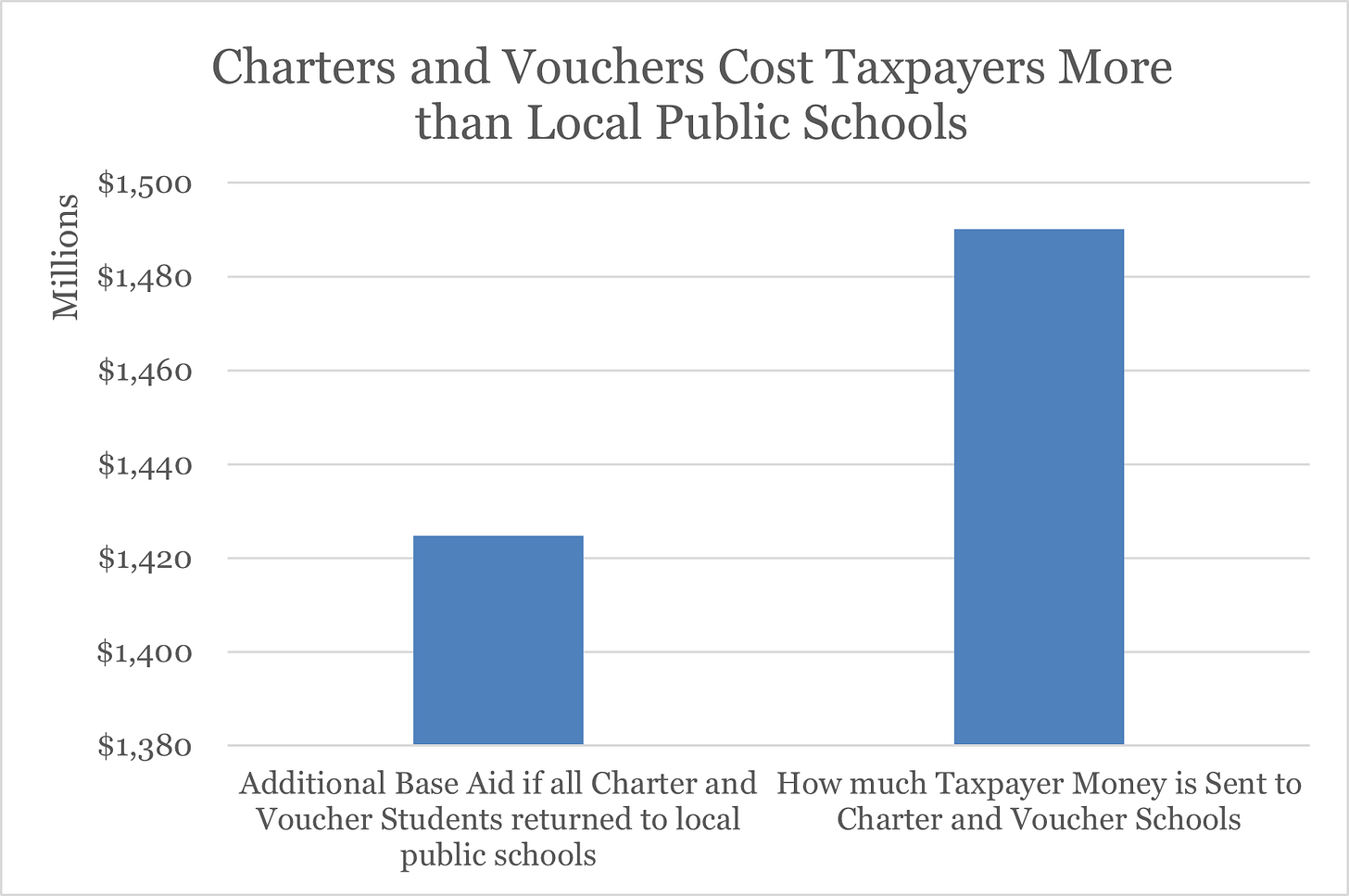10th Period: Ohio School Privatization More Expensive Than Public Schools
After taking a couple weeks to take my youngest son on a Great Western Road Trip, I have returned to be gob smacked yet one more time about what a problem Ohio’s voucher and charter programs are for taxpayers.
I’ve helped document for years how Ohio’s charter schools and voucher program doesn’t lead to better educational outcomes, while it harms the educational opportunities for the 90% of Ohio students who are educated in local public school districts and leads to greater racial segregation.
However, the pro-privatization folks seemed to always have this in their quiver: At least charters and vouchers are cheaper for Ohio' taxpayers.
Here’s how the Fordham Institute put it:
Even after a massive overhaul of the school funding system, Ohio charter schools are still shortchanged, receiving about 75 cents on the dollar compared to their traditional public school counterparts.
So I decided to check out their claim. And it appears that the state’s charter and voucher programs cost about 5-10% more than it would to just have all those students return to their resident public school district.
That’s right. It’s cheaper for Ohio taxpayers to keep all those charter and voucher students in local public schools. And they’ll do better academically. And we’ll have a more integrated public school system. And kids in public schools won’t have to do with fewer opportunities so privately run educational options can receive public subsidies.
Other than that…
Here’s how I figured this out.
First, the state now tracks the number of students in a resident district and how many leave for the charter and voucher programs. The state also keeps track of the new per pupil base funding amounts in each school district. Under the state’s new Fair School Funding Plan, districts receive what they need not based on a statewide average per pupil amount, but an amount based on what the students they have need to succeed.
What that means is if you have fewer students, you get less money. Get more students, you get more money.
So, I took the per pupil amount each district receives under the new formula and multiplied it by the number of district students attending voucher or charter schools. This allows me to get a good idea of what the base aid amount each district is not receiving because these programs siphon off those kids. Then I added up each district amount to arrive at a statewide total — $1.42 billion.
The amount we’ve spent this year on charters and vouchers?
$1.5 billion — about 5% more.
A couple caveats: 1) the Ohio Department of Education (ODE) does not have 2021-2022 data available yet on voucher enrollment and payments. If the year-to-year increase is the same as it was between last school year and this one, the total spent on charters and vouchers could be another $50 million; 2) the number of students taking charters and vouchers by district is from the 2020-2021 school year, so the total number being lost this year may also be more; and 3) this calculation is the base aid amount calculated under the state’s new school funding formula, so districts don’t get all the base aid amount because the state assumes local districts can raise enough revenue to offset much of the base aid amount.
While these caveats may change the amounts involved here, it is likely that the difference in cost will be even greater because the state would provide less than that additional $1.42 billion base aid amount I’m estimating here.
The bottom line is this: It costs significantly more to run these charter and voucher programs than it would to fund these students under the Fair School Funding Plan in their resident district.
So, if you’re keeping score at home, these programs do the following:
-
provide inferior overall student performance
-
limit public school students’ educational opportunities
-
worsen school segregation
-
cost taxpayers significantly more money than the students would need to be educated their local public school districts.
Now why is it that Ohio lawmakers keep pouring money into these programs again?
This blog post has been shared by permission from the author.
Readers wishing to comment on the content are encouraged to do so via the link to the original post.
Find the original post here:
The views expressed by the blogger are not necessarily those of NEPC.

